Are you getting the "macOS Cannot Verify That This App Is Free from Malware" message? It simply means that the system doesn't allow the user to open the app as it is not sure if it is malware-free. Apple does this to remove potential threats to your system. To fix the error message, try these steps:
| Workable Solutions | Step-by-step Troubleshooting |
|---|---|
| Fix 1. Utilizing Control Property | One of the best ways to resolve this error message is to opt for the control click property...Full steps |
| Fix 2. Setting System Preferences | You can use System Preferences to fix the macOS cannot verify that this app is free from...Full steps |
| Fix 3. Opening Apps Terminal | Lastly, you can use Terminal to open unverified apps. But, you need to take a look at these steps...Full steps |
So, why do you see the error pop-up window? Two distinct reasons can lead to the occurrence of this error message. Let's take a look -
Reason 1. Apple Store hasn't authorized this app
One of the primary reasons that prevent users from opening the app is the unauthorization of an app from the Apple Store. When the app store has little information, it will show that the app is not unauthorized. It also means that Apple hasn't been able to scan the app and detect the presence of malicious software. In that case, downloading such apps is totally at the user's discretion.
Reason 2. The Gatekeeper won't be able to verify the app
Gatekeeper is one of the essential features of macOS. When users download an app or software, the Gatekeeper scans it to see if there is any malware or viruses. Only when the tool deems the app safe will it allow the users to open and use it.
That is why after the app downloads, Gatekeeper starts its work. It scans the installation file thoroughly and allows users to keep it on the system. It mainly checks if the app has Apple verification and server registration. That way, you can handle the safety of your system.
Safe or Not: Can I Launch an App macOS Cannot Verify
If you are receiving the "macOS Cannot Verify That This App Is Free from Malware" message, that is cause to worry! It doesn't necessarily mean that the app is dangerous. The warning indicates that Apple cannot guarantee the app's legitimacy and has not been able to verify it. That is why it becomes risky for users to download apps from these developers.
Keep in mind that you are taking a risk by installing such apps. It may come with malware or malicious code that affects the system's functioning. It can also lead to the loss of sensitive data. Only go ahead with unverified apps if you know the developer and can rely on them.
However, if you don't know the app developer or publisher, think before taking such risks. It may cause unintentional damage to the system. To avoid that scenario, you can take help from different tools. Various tools allow users to see if the app is malicious or not, and we recommend TotalAV. It is an advanced tool that can scan and eliminate computer viruses and malware effectively and also can block unlimited ADs.
Apart from that, you can also follow these tips -
Tip 1. Check the App's Source
Websites and apps have source code which is generally present on the developer's website. In some cases, you can also find it in the App Store. Moreover, other information related to the app is also present there. Check this info out first.
Tip 2. Ensure Its Developer or Publisher Is Trusted
Another thing you need to consider is the reputation of the developer or publisher. Check and see if there are too many negative reviews. Also, research the developer or publisher and see what the web says.
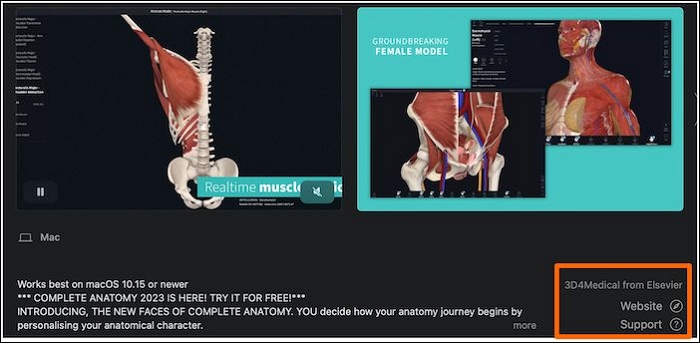
Tip 3. Research Other Issues Reported About the App
You should conduct thorough research on the app before downloading it. For that, scroll through the reviews and see the issues reported. If too many complain about multiple features or aspects, think twice before moving ahead.
3 Ways: How to Solve macOS Cannot Verify That This App Is Free from Malware Error
You can apply three solutions to solve macOS cannot verify that this App is free from malware error. Check these out here -
Fix 1. Utilizing Control Click Property
One of the best ways to resolve this error message is to opt for the control click property. Here are the steps you need to follow:
Step 1. Open Mac Finder on the system. You need to click on Go from the top Finder menu. A drop-down menu will appear; click on Applications from there.
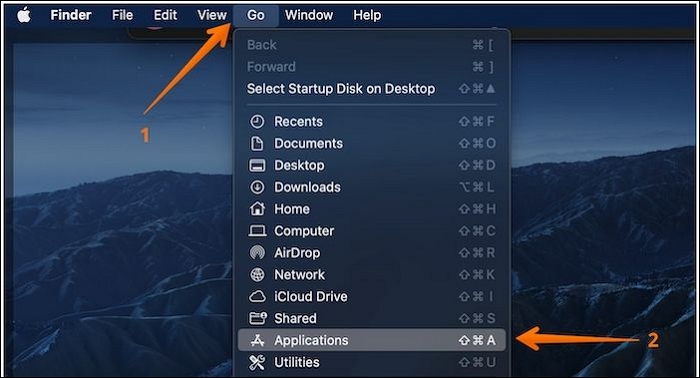
Step 2. You can choose the app that leads to the macOS - Cannot Verify That This App Is Free - from Malware Error.
Step 3. You should press the Control key while simultaneously right-clicking on the app.
Step 4. When the context menu comes, select the Open option.
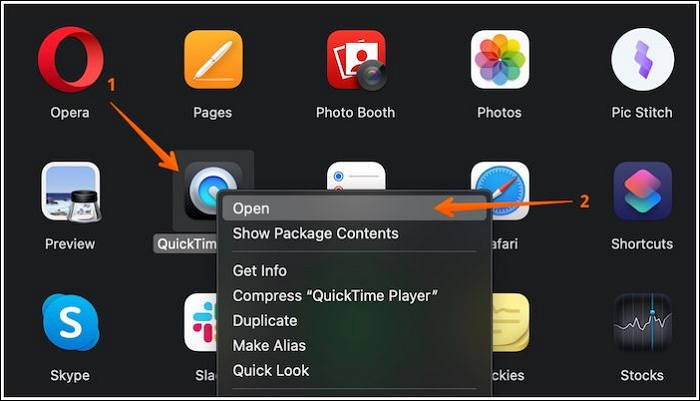
Step 5. You will come across the warning box. Click on Open again to move ahead.
Step 6. Now, you can open the app.
Fix 2. Setting System Preferences
You can also use System Preferences to fix the macOS Cannot Verify That This App Is Free from Malware Error problem.
Let's take a look at the steps you can adopt.
Step 1. Go to the Apple menu. Click on System Preferences.
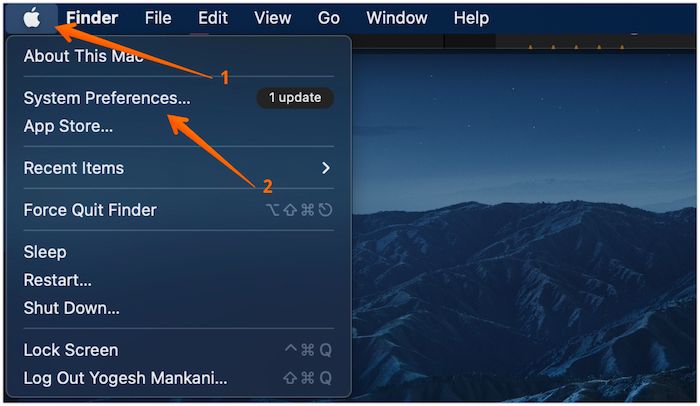
Step 2. Select Security and Privacy.
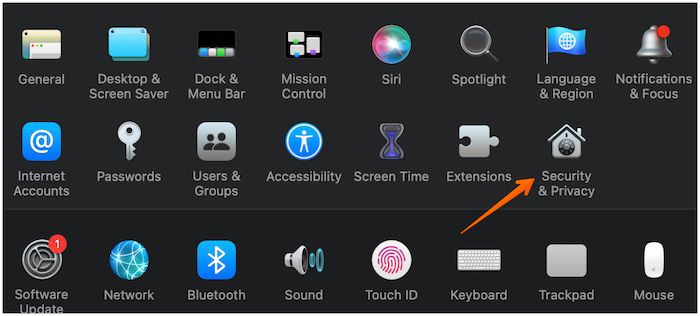
Step 3. Click on the General tab. Now, click on the Lock icon on the left-bottom corner of the screen. You need to enter the username and password.
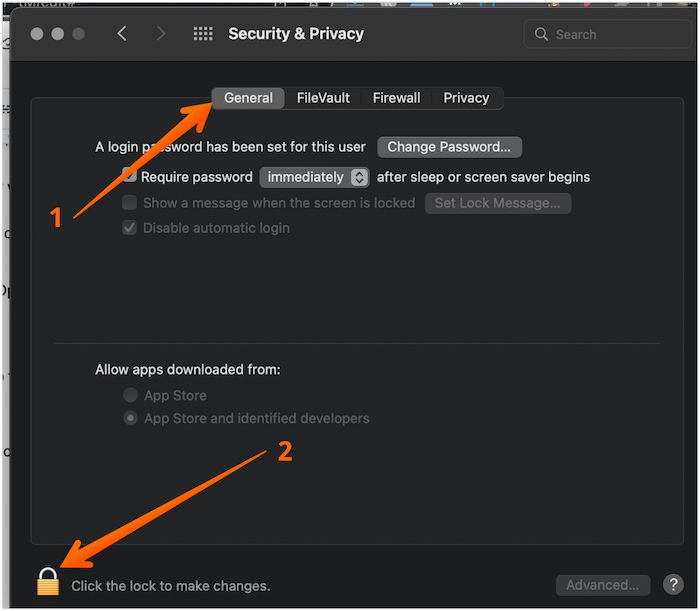
Step 4. Press Return. Now, you will find the Open Anyway option in the window. Click on it and enter the admin credentials needed.
Step 5. After that, select the Open option; it will launch the app.
Fix 3. Opening Apps Using Terminal
Lastly, you can use Terminal to open unverified apps. But, for that, you need to take a look at these steps:
Step 1. Go to the Mac Launchpad. Select the Others folder from there.

Step 2. Open the Terminal window. In the terminal window, enter - sudo spctl –master-disable
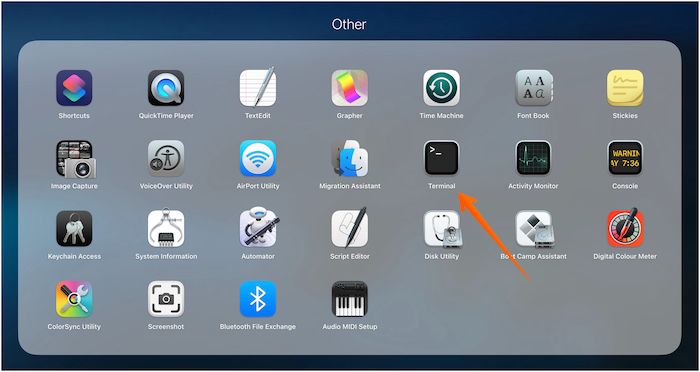
Step 3. Press the Return button. Type the password and press Return again.
Step 4. Now, go to System Preferences. Select Security & Privacy and then go to the General tab.
Step 5. At the bottom, you will see the Anywhere option under – Allow apps downloaded from.
Step 6. Click on it, and now you can easily open the app.
Extra Tip: Recover Lost Data When Your Mac May be in Danger
Sometimes, we need more than research and caution to prevent us from downloading unverified apps. But panic and anxiety begin when the unthinkable happens and data loss occurs. It mainly happens when you download and install unauthorized apps with malware codes. They attack the system leading to the loss of precious data.
In that case, you need to opt for professional yet reliable data recovery software. For that, you can choose EaseUS Data Recovery Wizard for Mac. It is one of the best data recovery programs for macOS. The tool is designed to help Mac users recover data due to malware issues, system stuck, virus attacks, and unintentional file deletion.
- With this software, you can recover data from different devices. These include MacBook, iMac, hard drives, cameras, memory SD cards, USB flash drives, etc.
- You can also retrieve various file types, such as documents, photos, videos, music, emails, archives, etc.
- You can store the recovered data in cloud services such as Dropbox, OneDrive, Google Drive, etc.
- The tool is easy to use and enables users to easily find and recover permanently deleted files on Mac.
Apart from that, you can also get remote assistance if you face issues while using the software. There are two distinct versions available – paid and free. Start with the free trial, and then you can choose any of the paid programs.
Step 1. Select the drive to be scanned
In the main EaseUS Data Recovery Wizard window, there will be a list of the drives connected to your Mac. Select the drive you need to recover lost/deleted files from, and click the "Search for lost files" button.

Step 2. Select your lost data/files
EaseUS Data Recovery Wizard for Mac will immediately scan your selected disk volume and display the scanning results on the left pane. You can sort the results to find the wanted files if you are looking for certain files.

Step 3. Recover lost/deleted data
Once you have found the desired files, preview the files and then click "Recover" to begin the recovery of your deleted/lost Mac files.

Check EaseUS Data Recovery Data Wizard for Mac
Final Words
Apple understands the importance of system security and thus ensures it is maintained. That is why users get the "macOS Cannot Verify That This App Is Free from Malware" message while downloading unverified apps. Two reasons can explain why you are getting this error message.
However, if you are sure about the developer, you can bypass the error message. There are multiple solutions one can apply to resolve this. But, in some cases, you can also face data loss due to malicious code or malware attacks from the app. Opting for the best data recovery software is an excellent idea.
Choose EaseUS Data Recovery Wizard for Mac. It is an excellent data recovery tool that aids in retrieving different types of data from various devices. The software is easy to use and comes with a free version!
macOS Cannot Verify That This App Is Free from Malware FAQs
You can apply different solutions to resolve the macOS Cannot Verify That This App Is Free from Malware message. To gather more information, take a look at these questions and answers.
1. How to override macOS cannot verify that this App is free from malware error?
To override, macOS cannot verify that this app is free from malware; you need to go to System Preferences. Then, select Security and Privacy and press the General tab. You will see a lock sign on the lower-right part of the screen.
Click on it and enter the username and password. After that, select App Store - Identified Developers radial button. Search for 'App was blocked from opening because it's not from an identified developer' and press the Open Anyway option.
2. How do I open an app with unverified developers?
To open an app with unverified developers, you need to open Finder. Now, look out for the app you want to open. Press the Control key and click the app icon at the same time. Now, press Open and save the app as an exception to the typical security settings.
3. How to know if a given app that hasn't been verified is safe?
Allow Gatekeeper to scan the app and ensure it is safe even if it's not verified. If you are not sure, do not use the app.
4. How do I bypass unidentified developers on Mac without admin?
To bypass unidentified developers on Mac without admin, create a folder with that app name. Now, add the app extension to this folder. Go to the original app and right-click on it. Press the Show package contents option.
You should right-click on the app and press the Show package contents option. Copy the Contents and paste them into the folder you made. After that, open the app.
5. How to disable Mac cannot be opened because the developer cannot be verified?
To disable Mac Cannot be opened because the developer Cannot be verified; you can bypass the security settings manually via System Preferences. Moreover, you can also override the security settings using Finder.
Was This Page Helpful?
Dany is an editor of EaseUS who lives and works in Chengdu, China. She focuses on writing articles about data recovery on Mac devices and PCs. She is devoted to improving her writing skills and enriching her professional knowledge. Dany also enjoys reading detective novels in her spare time.
Jaden is one of the editors of EaseUS, who focuses on topics concerning PCs and Mac data recovery. Jaden is committed to enhancing professional IT knowledge and writing abilities. She is always keen on new and intelligent products.
Related Articles
-
Windows 10 Keeps Restarting or Continuously Reboots? Fix It Now!
![author icon]() Tracy King/2024-10-14
Tracy King/2024-10-14 -
FIXED: Helldivers 2 Crashing on PC (Solutions & Causes)🔥
![author icon]() Oliver/2024-10-23
Oliver/2024-10-23 -
Windows Update Service Could Not Be Stopped - How to Fix?
![author icon]() Jerry/2024-10-25
Jerry/2024-10-25 -
How to Unlock MacBook Pro Without Password | Forget My Password
![author icon]() Dany/2024-10-31
Dany/2024-10-31
EaseUS Data Recovery Services
EaseUS data recovery experts have uneaqualed expertise to repair disks/systems and salvage data from all devices like RAID, HDD, SSD, USB, etc.
